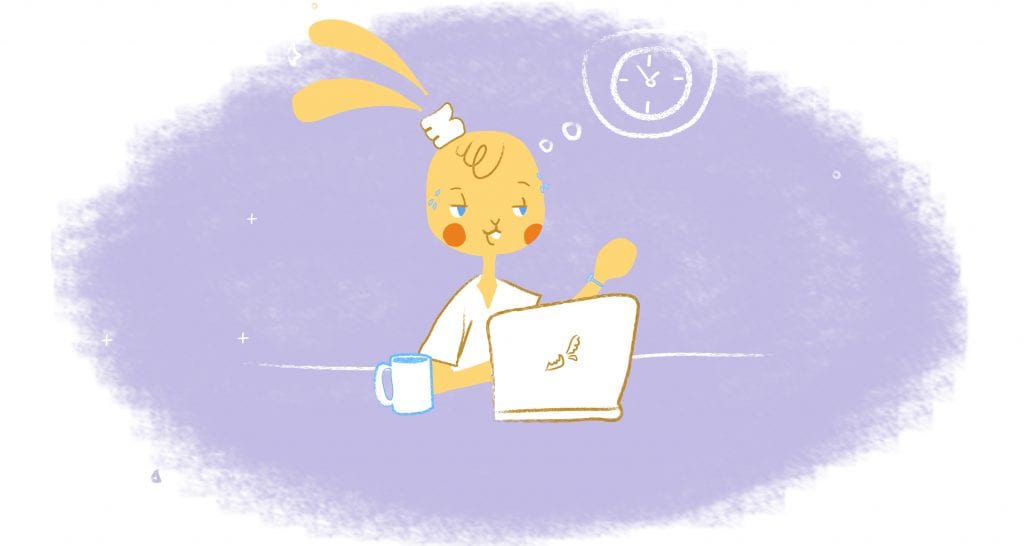

While learning disabilities are often associated with childhood challenges, these conditions can have far-reaching impacts far beyond the early classroom. The reality is that many adults continue to cope with the difficulties of LDs — while also balancing the demands of work and family life. Carrying many learning disabilities into adulthood, neurodivergent and learning-disabled individuals often have difficulty achieving optimal productivity. But there is great hope for the future where these seeming issues will be non-issues.
Additionally, this is more common than most people realize. About 14% of the US population, or 1 in 7, has a learning disability, according to Bright Futures NY. However, some experts believe the number may be closer to 20% or higher since many cases go undiagnosed or misdiagnosed.
As such, this blog post presents strategies for employers and employees to create a more inclusive and supportive workplace environment for individuals with LDs.
Understanding Learning Disabilities
Some people have been perceived as being lazy, but that is far from the case; learning disabilities are neurological disorders. As a result, the brain cannot process, receive, store, and respond to information like the extensive range of standard-operational people respond. Furthermore, a learning disability can affect anyone, regardless of race, culture, or gender. Aside from that, there is no known singular cause.
It is common for these conditions to manifest themselves in different ways, such as difficulty with reading, writing, math, and organization. There are many kinds of learning disabilities. However, dyslexia, dysgraphia, dyscalculia, and ADHD are the most common.
The following are some common types of learning disabilities.
- Sequencing disorders. The inability to understand order. As a result, this makes it hard to organize, do math, or follow directions.
- Language disorders. A lack of understanding (receptive) or expression (expressive) of language.
- Visual perceptual and visual motor disorders. Visual information processing is difficult, impacting reading, spelling, and writing. In many cases, dyslexia is the term used to describe it.
- Auditory disorders. There are challenges in processing sounds, such as separating words with similar sounds.
- Memory disorders. It is difficult to recall information within a reasonable amount of time.
- Gross and fine motor disorders. There may be coordination problems, potentially affecting handwriting.
These challenges can be frustrating. However, it is crucial to recognize that individuals with LDs often have unique abilities and strengths that you want in your company.
Challenges Faced by Employees with LDs
In the workplace, people with learning disabilities often face significant challenges. Some of these include.
- Difficulty with time management and organization. It can be particularly challenging to complete tasks that require intricate planning or strict deadlines.
- Challenges with written communication. Spelling, grammar, and expression difficulties can make writing emails, reports, and presentations time-consuming and stressful. However, most of the writing parts can be overcome with free Grammarly editing.
- Problems with information processing. Performance can be hindered by difficulty understanding complex instructions or processing information quickly.
- Social challenges. Some people with learning disabilities find it difficult to interact with colleagues, attend meetings, and participate in team activities.
- Anxiety and low self-esteem. Anxiety and a negative self-image can be caused by fear of failure or judgment.
Workplace Accommodations for Employees With Learning Disabilities
Individuals with disabilities, including learning disabilities, are entitled to reasonable accommodations under the Rehabilitation Act of 1973 and the Americans with Disabilities Act of 1990. Depending on the needs of the individual, effective accommodations may include:
- Clear expectations. Clearly define work tasks and workplace behavior.
- Effective communication. Provide both written and verbal instructions that are clear and repeated.
- Targeted support. Provide specific aids to assist with individual learning challenges.
Potential accommodations include:
- Checklists for organization.
- Meetings with supervisors regularly.
- Feedback that is frequent and specific.
- Modified exams and training programs.
- Flexible work schedules.
Creating an Inclusive Workplace
Additionally, employers can support their employees with LDs by implementing the following strategies:
Encourage understanding and empathy.
Educating employees about learning disabilities (LDs) can create an inclusive workplace. Workshops and training (especially for managers) that discuss the various types of LDs, their impact on work performance, and effective, practical support strategies can also create a more empathetic working environment.
Communication and trust are essential.
The importance of encouraging open communication between employees and management cannot be overstated. The workplace should be where employees can disclose their disabilities without fear of discrimination. Fostering trust and open communication requires a supportive workplace culture where employees feel heard and valued.
A personalized approach to support.
Every individual with an LD should receive accommodations tailored to their specific needs. Providing assistive technology, such as accessibility tools, can help create a more accessible and inclusive workplace. Additionally, consider modifying work environments or redesigning job responsibilities based on the employee’s strengths.
Expectations and feedback that are clear.
Success depends on providing clear, concise instructions and regular feedback. Step-by-step guidance, visual aids, and written instructions can enhance understanding, and employees feel supported when they receive regular feedback.
Develop mentorship and support networks.
Mentoring programs and coaching can provide invaluable support for employees with learning disabilities. By providing guidance, encouragement, and skill development opportunities, mentors can help employees build their confidence and competence.
Flexible work arrangements.
Providing flexible work arrangements, such as modified work hours or remote work options, can significantly benefit employees with LDs. By maintaining a healthy work-life balance, employees can manage their workload effectively.
Organizations can use these strategies to foster a more inclusive and supportive workplace for employees with learning disabilities.
Strategies for Individuals with Learning Disabilities
It is often necessary for individuals with learning disabilities to collaborate with their employers in order for them to succeed at work. To manage their learning challenges, individuals can take proactive measures such as:
- To identify strengths and weaknesses, seek professional evaluations.
- Implementing effective strategies, such as note-taking, time management, and organization.
- Keeping employers informed about specific needs and accommodations
Potential strategies include:
- While attending a meeting, take notes or use a recording device.
- To keep track of tasks and appointments, use a planner or calendar.
- Maintaining an organized and clean workspace.
- Leaving extra time for appointments and commutes.
- Organize daily tasks ahead of time.
It’s important to remember that every person with a learning disability is unique. Adapting accommodations and strategies based on individual needs is essential for achieving workplace success.
Communicating Your Needs
Additionally, if you are neurodivergent or have a learning disability, you can receive tailored accommodations from your manager. To achieve this, you must communicate your specific needs, such as;
- Distractibility. The inability to concentrate due to sensory stimuli such as noise or visual distractions.
- Sensory overload. The overload of sensory information leads to a feeling of overwhelm.
- Communication difficulties. Having difficulty expressing thoughts or understanding others.
- Spatial challenges. Having trouble navigating physical spaces.
Explaining these challenges clearly will help your manager implement supportive measures. Examples include adjusting the layout of your workspace or setting up quiet spaces.
Boosting Your Productivity
Additionally, you can boost your productivity by using these strategies:
- Customize your workspace. Ensure that your work environment is distraction-free and focused.
- Utilize mind mapping. Create a visual representation of your thoughts and organize them efficiently.
- Leverage productivity apps. Schedule tasks, manage priorities, and manage schedules digitally.
- Manage notifications. By limiting unnecessary alerts, you can reduce distractions.
- Prioritize tasks. In order to improve efficiency, start with the most challenging tasks. To get started, give the Eisenhower Matrix a try.
- Avoid multitasking: Focus on one task at a time for better results.
- Take breaks. Incorporate short rest periods into your schedule to prevent burnout.
With these techniques and workplace accommodations, you can significantly improve your productivity.
Overcoming Stigma and Building Confidence
Developing confidence and overcoming stigma are some of the biggest challenges facing people with LDs. Employers can foster a supportive and inclusive workplace culture by enabling employees with LDs to thrive. Furthermore, individuals with disabilities must focus on their strengths, seek support, and celebrate their successes to build their confidence.
It is important to remember that learning disabilities are not obstacles to success. Someone with a learning disability can significantly contribute at work if they receive the right support and accommodations. Empowering individuals with LDs to reach their full potential through education and creating inclusive environments is possible.
FAQs
What is a learning disability?
An individual with a learning disability has difficulties learning, understanding, or communicating. It has nothing to do with intelligence or laziness. Dyslexia, dyspraxia, dyscalculia, and ADHD are some of the most common learning disabilities.
When it comes to employees with learning disabilities, what is the legal responsibility of employers?
Employers are legally responsible for providing reasonable accommodations to employees with disabilities, including learning disabilities. This is a legal requirement mandated by US laws like the Americans with Disabilities Act.
What are standard accommodations for employees with learning disabilities?
The accommodations provided can vary depending on the needs of each individual. Examples include:
- Flexible work arrangements. Possibly, this would include adjusting work hours or offering remote work.
- Assistive technology. Several tools can be useful, such as speech-to-text software, screen readers, and organizational apps.
- Modified work tasks. Work can be simplified by breaking tasks into smaller steps or providing clear instructions.
- Extra time for tasks. By giving tasks additional time, stress can be reduced, and accuracy can be improved.
- Time management support. Helping people manage their time and organize their lives by offering training or tools.
- Quiet workspaces. Allowing concentration-required tasks to be carried out in a quiet environment.
How can individuals with learning disabilities prepare for the workplace?
- Develop self-advocacy skills. Communicate needs and request accommodations to receive the assistance you need.
- Build your strengths. Utilize strengths in the workplace and focus on them.
- Network. Get advice and support from other individuals with learning disabilities, such as the Job Accommodation Network (JAN).
- Seek support. Take advantage of resources like career counseling or disability support.
Can people with learning disabilities be successful in the workplace?
Absolutely!
In the right environment and with the right support, individuals with learning disabilities can be productive and valuable employees. They often possess strong problem-solving, critical thinking, and creativity skills.
Image Credit: Yan Krukau; Pexels











Angela Ruth
My name is Angela Ruth. I aim to help you learn how Calendar can help you manage your time, boost your productivity, and spend your days working on things that matter, both personally and professionally. Here's to improving all your calendars and becoming the person you are destined to become!